My
List |
Addition Date
|
Target
|
Mission
|
Instrument
|
Size
|

|
2025-05-01 |
Sky
|
SPHEREx
|
Spectro-Photometer
|
2280x1282x3 |

|
-
PIA26352:
-
SPHEREx's Dust Cloud Reveal
Full Resolution:
TIFF
(4.221 MB)
JPEG
(428.7 kB)
|

|
2025-05-01 |
Sky
|
SPHEREx
|
Spectro-Photometer
|
960x537x3 |

|
-
PIA26351:
-
SPHEREx Scans the Sky
Full Resolution:
TIFF
(934.8 kB)
JPEG
(63.32 kB)
|

|
2024-05-09 |
|
Spitzer Space Telescope
|
Spitzer Space Telescope
|
16151x6971x3 |

|
-
PIA26276:
-
The Infrared Face of the Andromeda Galaxy
Full Resolution:
TIFF
(185.7 MB)
JPEG
(11.39 MB)
|

|
2022-06-16 |
|
Herschel Space Observatory
|
|
4950x4950x3 |
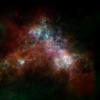
|
-
PIA25164:
-
Small Magellanic Cloud Imaged by Herschel, Planck, IRAS, COBE
Full Resolution:
TIFF
(54.26 MB)
JPEG
(1.546 MB)
|

|
2022-06-16 |
|
Herschel Space Observatory
|
|
13000x13000x3 |
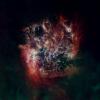
|
-
PIA25162:
-
Large Magellanic Cloud Imaged by Herschel, Planck, IRAS, COBE
Full Resolution:
TIFF
(291.7 MB)
JPEG
(6.089 MB)
|

|
2021-10-25 |
|
Spitzer Space Telescope
|
Spitzer Space Telescope
|
3542x3542x3 |
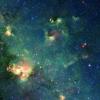
|
-
PIA24579:
-
Godzilla Nebula Imaged by Spitzer
Full Resolution:
TIFF
(37.65 MB)
JPEG
(2.228 MB)
|

|
2021-08-31 |
|
NEOWISE
|
|
360x360x3 |
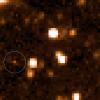
|
-
PIA24578:
-
An Accidental Discovery
Full Resolution:
TIFF
(256.6 kB)
JPEG
(15.79 kB)
|

|
2021-08-17 |
|
Spitzer Space Telescope
|
Spitzer Space Telescope
|
4800x2700x3 |
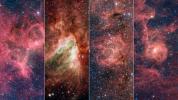
|
-
PIA24577:
-
Four Famous Nebulae
Full Resolution:
TIFF
(38.9 MB)
JPEG
(2.529 MB)
|

|
2021-08-17 |
|
|
|
4800x2700x3 |
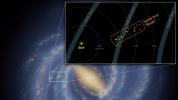
|
-
PIA24576:
-
A Break in the Milky Way's Sagittarius Arm
Full Resolution:
TIFF
(20.62 MB)
JPEG
(897.7 kB)
|

|
2021-07-09 |
|
NuSTAR
|
|
4000x1459x3 |
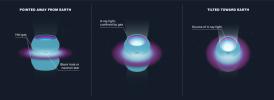
|
-
PIA24574:
-
The Changing X-ray Brightness of SS 433 (Illustration)
Full Resolution:
TIFF
(2.821 MB)
JPEG
(198 kB)
|

|
2021-04-21 |
Milky Way
|
|
|
3840x2160x3 |
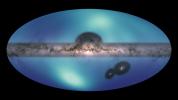
|
-
PIA24571:
-
Star Map of the Milky Way's Outer Halo
Full Resolution:
TIFF
(16.93 MB)
JPEG
(1.124 MB)
|

|
2020-08-25 |
|
Spitzer Space Telescope
|
Spitzer Space Telescope
|
2000x1125x3 |
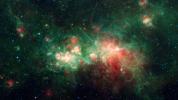
|
-
PIA23865:
-
Spitzer Image of Star Factory W51
Full Resolution:
TIFF
(6.752 MB)
JPEG
(432.4 kB)
|

|
2019-09-30 |
|
Spitzer Space Telescope
|
Spitzer Space Telescope
|
3250x3250x3 |
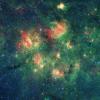
|
-
PIA23402:
-
Spitzer Spots Bubbles and Bow Shocks
Full Resolution:
TIFF
(31.7 MB)
JPEG
(1.693 MB)
|

|
2019-07-31 |
|
Spitzer Space Telescope
|
IRAC
|
1200x1200x3 |
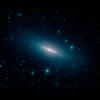
|
-
PIA23129:
-
NASA's Spitzer Spots a Perfectly Sideways Galaxy
Full Resolution:
TIFF
(2.072 MB)
JPEG
(59.86 kB)
|

|
2018-10-23 |
|
Spitzer Space Telescope
|
IRAC
|
5000x1848x3 |
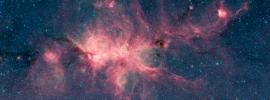
|
-
PIA22567:
-
Cat's Paw Image 2
Full Resolution:
TIFF
(27.74 MB)
JPEG
(1.843 MB)
|

|
2018-10-23 |
|
Spitzer Space Telescope
|
IRAC
|
5000x1848x3 |
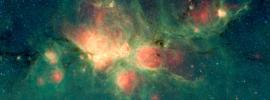
|
-
PIA22568:
-
Cat's Paw Image 1
Full Resolution:
TIFF
(27.74 MB)
JPEG
(1.447 MB)
|

|
2018-09-25 |
Earth
|
CubeSat
|
|
478x318x3 |
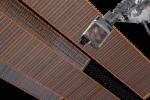
|
-
PIA22653:
-
Mini Mission RainCube is Sent into Earth Orbit
Full Resolution:
TIFF
(330.8 kB)
JPEG
(210.5 kB)
|

|
2018-01-31 |
|
Hubble Space Telescope
Spitzer Space Telescope
|
|
1608x2048x3 |

|
-
PIA22092:
-
Arp 142: The Penguin and the Egg
Full Resolution:
TIFF
(6.359 MB)
JPEG
(144.5 kB)
|

|
2018-01-11 |
|
Hubble Space Telescope
|
|
1000x750x3 |

|
-
PIA22079:
-
NASA's Hubble Spots Embryonic Galaxy SPT0615-JD
Full Resolution:
TIFF
(2.083 MB)
JPEG
(107.9 kB)
|

|
2017-03-23 |
|
Galaxy Evolution Explorer (GALEX)
NuSTAR
|
GALEX Telescope
NuSTAR
|
2048x1152x3 |
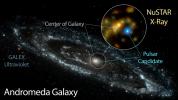
|
-
PIA20970:
-
Pulsar Candidate in Andromeda
Full Resolution:
TIFF
(3.973 MB)
JPEG
(291.9 kB)
|

|
2017-01-05 |
|
|
|
4096x2560x3 |
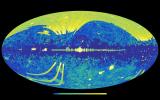
|
-
PIA21084:
-
NED Catalog Sky Source Map
Full Resolution:
TIFF
(14.31 MB)
JPEG
(1.889 MB)
|

|
2016-09-08 |
|
Spitzer Space Telescope
|
Spitzer Space Telescope
|
2125x1195x3 |
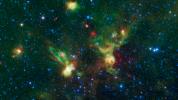
|
-
PIA20917:
-
Enterprising Nebulae
Full Resolution:
TIFF
(7.622 MB)
JPEG
(457.3 kB)
|

|
2016-08-25 |
|
Spitzer Space Telescope
|
|
4533x2550x3 |
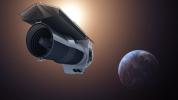
|
-
PIA20913:
-
Spitzer Beyond (Artist's Concept)
Full Resolution:
TIFF
(17.43 MB)
JPEG
(442.8 kB)
|

|
2016-07-27 |
|
Chandra X-ray Observatory
Spitzer Space Telescope
Wide-field Infrared Survey Explorer (WISE)
|
|
4534x2550x3 |
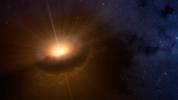
|
-
PIA20700:
-
The Loneliest Young Star (Artist's Concept)
Full Resolution:
TIFF
(22.69 MB)
JPEG
(373.6 kB)
|

|
2016-07-19 |
|
Wide-field Infrared Survey Explorer (WISE)
|
|
8000x4500x3 |
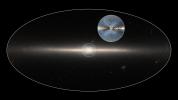
|
-
PIA20699:
-
X-Shaped Bulge in the Milky Way
Full Resolution:
TIFF
(46.74 MB)
JPEG
(6.544 MB)
|

|
2016-04-14 |
|
Spitzer Space Telescope
|
IRAC
Two Micron All Sky Survey (2MASS)
|
4165x2343x3 |
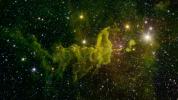
|
-
PIA20357:
-
The Spider Nebula
Full Resolution:
TIFF
(24.67 MB)
JPEG
(1.305 MB)
|

|
2016-04-07 |
|
Kepler
|
|
2400x2329x3 |
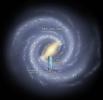
|
-
PIA20070:
-
Map of Exoplanet Search Areas
Full Resolution:
TIFF
(10.39 MB)
JPEG
(264.1 kB)
|

|
2016-03-17 |
|
SDSS
|
|
1992x1128x3 |
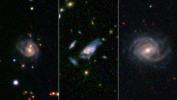
|
-
PIA20064:
-
Gargantuan 'Super Spiral' Galaxies Loom Large in the Cosmos
Full Resolution:
TIFF
(5.495 MB)
JPEG
(152.6 kB)
|

|
2016-01-28 |
|
Hubble Space Telescope
|
|
1886x3000x3 |

|
-
PIA16024:
-
Monstrous Cloud Boomerangs Back to Our Galaxy (Artist's Concept)
Full Resolution:
TIFF
(9.49 MB)
JPEG
(601.9 kB)
|

|
2016-01-21 |
|
Hubble Space Telescope
|
Advanced Camera for Surveys
|
3906x3906x3 |
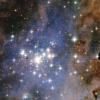
|
-
PIA20468:
-
Hubble Unveils a Tapestry of Dazzling Diamond-Like Stars
Full Resolution:
TIFF
(45.79 MB)
JPEG
(1.43 MB)
|

|
2016-01-05 |
|
Galaxy Evolution Explorer (GALEX)
NuSTAR
|
GALEX Telescope
NuSTAR
|
6289x3538x3 |
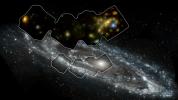
|
-
PIA20061:
-
Andromeda in High-Energy X-rays
Full Resolution:
TIFF
(41.67 MB)
JPEG
(2.214 MB)
|

|
2015-12-17 |
|
Hubble Space Telescope
|
|
1028x1218x3 |

|
-
PIA16022:
-
Hubble Sees the Force Awakening in a Newborn Star
Full Resolution:
TIFF
(3.517 MB)
JPEG
(85.05 kB)
|

|
2015-12-03 |
|
Hubble Space Telescope
Spitzer Space Telescope
|
WFC3
|
4169x4633x3 |

|
-
PIA20054:
-
Faint Compact Galaxy in the Early Universe
Full Resolution:
TIFF
(53.34 MB)
JPEG
(2.758 MB)
|

|
2015-06-03 |
Milky Way
|
Wide-field Infrared Survey Explorer (WISE)
|
|
1308x1308x3 |
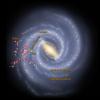
|
-
PIA19341:
-
Tracing the Arms of our Milky Way Galaxy
Full Resolution:
TIFF
(5.135 MB)
JPEG
(145.1 kB)
|

|
2015-05-28 |
|
Herschel Space Observatory
|
PACS
SPIRE
|
1323x1046x3 |
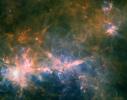
|
-
PIA19340:
-
Herschel's View of G49 Filament
Full Resolution:
TIFF
(4.153 MB)
JPEG
(95.89 kB)
|

|
2015-05-21 |
|
Wide-field Infrared Survey Explorer (WISE)
|
|
4000x2250x3 |
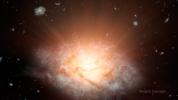
|
-
PIA19339:
-
Dusty 'Sunrise' at Core of Galaxy (Artist's Concept)
Full Resolution:
TIFF
(27.01 MB)
JPEG
(447.1 kB)
|

|
2015-04-29 |
|
NuSTAR
|
NuSTAR
|
2800x1575x3 |
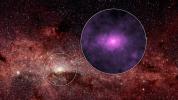
|
-
PIA19334:
-
Extra X-rays at the Hub of Our Milky Way Galaxy
Full Resolution:
TIFF
(13.24 MB)
JPEG
(864.6 kB)
|

|
2015-04-14 |
|
Spitzer Space Telescope
|
|
3300x2550x3 |
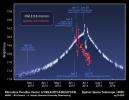
|
-
PIA19331:
-
Time Delay in Microlensing Event
Full Resolution:
TIFF
(25.26 MB)
JPEG
(502.2 kB)
|

|
2015-03-31 |
|
Planck
|
|
1600x900x3 |
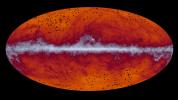
|
-
PIA19330:
-
Astronomers Dig Up Treasure Trove of Galaxy Clusters
Full Resolution:
TIFF
(4.322 MB)
JPEG
(141.4 kB)
|

|
2015-02-05 |
Milky Way
|
Planck
|
|
13206x6853x3 |
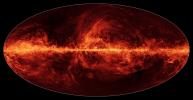
|
-
PIA18915:
-
Polarized Dust Lights Up Milky Way
Full Resolution:
TIFF
(271.6 MB)
JPEG
(6.333 MB)
|

|
2015-02-05 |
Milky Way
|
Planck
|
|
6000x6000x3 |
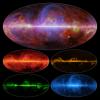
|
-
PIA18913:
-
Milky Way Untangled
Full Resolution:
TIFF
(108 MB)
JPEG
(2.399 MB)
|

|
2015-02-05 |
Milky Way
|
Planck
|
|
13206x6853x3 |

|
-
PIA18912:
-
A Milky Way 'Mixer' Amongst the Stars
Full Resolution:
TIFF
(271.6 MB)
JPEG
(4.538 MB)
|

|
2015-01-30 |
|
Planck
|
|
1200x1200x3 |
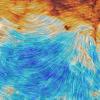
|
-
PIA18911:
-
Planck's View of BICEP2/Keck Array Field
Full Resolution:
TIFF
(4.322 MB)
JPEG
(299.3 kB)
|

|
2015-01-27 |
|
Spitzer Space Telescope
|
IRAC
|
3000x1688x3 |
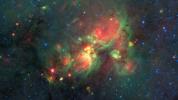
|
-
PIA18908:
-
Finding 'Yellowballs' in our Milky Way
Full Resolution:
TIFF
(15.2 MB)
JPEG
(413.7 kB)
|

|
2014-11-06 |
|
CIBER
|
|
2560x1440x3 |
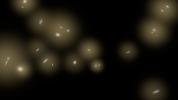
|
-
PIA18852:
-
Stray Stars Scattered in Space (Artist Concept)
Full Resolution:
TIFF
(11.06 MB)
JPEG
(100.2 kB)
|

|
2014-11-06 |
|
CIBER
|
CIBER
|
2248x1328x3 |
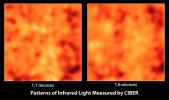
|
-
PIA18849:
-
Matching Patterns of Light
Full Resolution:
TIFF
(8.96 MB)
JPEG
(146.3 kB)
|

|
2014-09-19 |
|
Hubble Space Telescope
|
WFPC2
|
1280x686x3 |

|
-
PIA17808:
-
Hubble Feathers the Peacock
Full Resolution:
TIFF
(2.635 MB)
JPEG
(101.2 kB)
|

|
2014-09-16 |
|
Chandra X-ray Observatory
NuSTAR
|
|
1400x1400x3 |

|
-
PIA18836:
-
Powerful, Pulsating Core of Star
Full Resolution:
TIFF
(5.882 MB)
JPEG
(319 kB)
|

|
2014-07-02 |
|
Chandra X-ray Observatory
Hubble Space Telescope
Spitzer Space Telescope
Very Large Array (VLA)
|
|
3600x2812x3 |
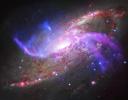
|
-
PIA18461:
-
Galactic Pyrotechnics on Display
Full Resolution:
TIFF
(30.38 MB)
JPEG
(1.396 MB)
|

|
2014-06-04 |
|
Spitzer Space Telescope
|
IRAC
|
986x1135x3 |

|
-
PIA18009:
-
Dissecting Dust from Detonation of Dead Star
Full Resolution:
TIFF
(3.359 MB)
JPEG
(103.6 kB)
|

|
2014-05-06 |
|
Planck
|
|
1760x880x3 |
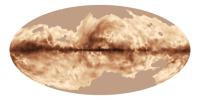
|
-
PIA18048:
-
Magnetic Map of Milky Way
Full Resolution:
TIFF
(4.648 MB)
JPEG
(127.3 kB)
|

|
2014-03-26 |
|
Spitzer Space Telescope
|
Spitzer Space Telescope
|
930x886x3 |
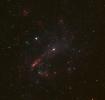
|
-
PIA17997:
-
Bulgeless Galaxy Hides Black Hole
Full Resolution:
TIFF
(2.473 MB)
JPEG
(70.62 kB)
|

|
2014-03-20 |
|
Spitzer Space Telescope
|
IRAC
|
14400x8700x3 |
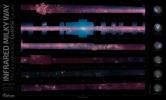
|
-
PIA17996:
-
GLIMPSE the Galaxy All the Way Around
Full Resolution:
TIFF
(375.9 MB)
JPEG
(9.296 MB)
|

|
2013-12-19 |
|
NEOWISE
|
NEOWISE Telescope
|
2032x2032x3 |
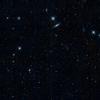
|
-
PIA17810:
-
NEOWISE Opens its Eyes
Full Resolution:
TIFF
(12.39 MB)
JPEG
(388 kB)
|

|
2013-12-18 |
|
Spitzer Space Telescope
|
IRAC
|
2000x2000x3 |
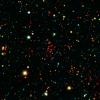
|
-
PIA17565:
-
Galactic Metropolis
Full Resolution:
TIFF
(12 MB)
JPEG
(435.8 kB)
|

|
2013-12-12 |
|
Herschel Space Observatory
Hubble Space Telescope
|
PACS
WFPC2
|
3864x3864x3 |
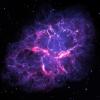
|
-
PIA17563:
-
Crab Nebula, as Seen by Herschel and Hubble
Full Resolution:
TIFF
(44.81 MB)
JPEG
(1.205 MB)
|

|
2013-10-17 |
|
Spitzer Space Telescope
|
Spitzer Space Telescope
|
1024x683x3 |

|
-
PIA17446:
-
Big Data on the Big Screen
Full Resolution:
TIFF
(2.099 MB)
JPEG
(109.1 kB)
|

|
2013-07-03 |
|
Voyager
|
|
800x600x3 |

|
-
PIA17036:
-
Voyager the Explorer
Full Resolution:
TIFF
(1.441 MB)
JPEG
(71.28 kB)
|

|
2013-06-28 |
|
Galaxy Evolution Explorer (GALEX)
|
GALEX Telescope
|
1650x1650x3 |
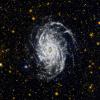
|
-
PIA17247:
-
Big Brother to the Milky Way
Full Resolution:
TIFF
(8.171 MB)
JPEG
(473.8 kB)
|

|
2013-06-28 |
|
Galaxy Evolution Explorer (GALEX)
|
GALEX Telescope
|
1500x1500x3 |
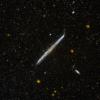
|
-
PIA17246:
-
Galaxy's Pencil-Thin Profile
Full Resolution:
TIFF
(6.753 MB)
JPEG
(377.7 kB)
|

|
2013-06-05 |
|
Spitzer Space Telescope
|
IRAC
|
6600x6600x3 |
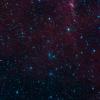
|
-
PIA17241:
-
Galaxies in Hiding
Full Resolution:
TIFF
(130.7 MB)
JPEG
(6.917 MB)
|

|
2013-06-05 |
|
Spitzer Space Telescope
Wide-field Infrared Survey Explorer (WISE)
|
IRAC
WISE Telescope
|
9000x7000x3 |
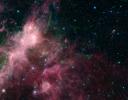
|
-
PIA17019:
-
Life and Death Intermingled
Full Resolution:
TIFF
(189.1 MB)
JPEG
(10.27 MB)
|

|
2013-06-05 |
|
Spitzer Space Telescope
Wide-field Infrared Survey Explorer (WISE)
|
IRAC
WISE Telescope
|
3000x3000x3 |
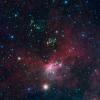
|
-
PIA17018:
-
Stars Shoot Jets in Cosmic Playground
Full Resolution:
TIFF
(27.01 MB)
JPEG
(1.76 MB)
|

|
2013-06-05 |
|
Spitzer Space Telescope
|
IRAC
|
3300x3300x3 |
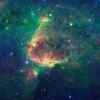
|
-
PIA17017:
-
Bubbles Within Bubbles
Full Resolution:
TIFF
(32.68 MB)
JPEG
(1.799 MB)
|

|
2013-05-22 |
|
Herschel Space Observatory
|
|
2400x1500x3 |
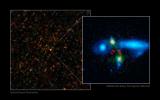
|
-
PIA17013:
-
The Making of a Giant Galaxy
Full Resolution:
TIFF
(10.8 MB)
JPEG
(211.3 kB)
|

|
2013-05-07 |
|
Herschel Space Observatory
|
|
4096x2048x3 |
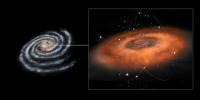
|
-
PIA17009:
-
Hustle and Bustle at Center of Milky Way
Full Resolution:
TIFF
(25.17 MB)
JPEG
(500.7 kB)
|

|
2013-04-23 |
|
Hubble Space Telescope
Wide-field Infrared Survey Explorer (WISE)
|
WISE Telescope
|
4095x2842x3 |
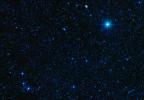
|
-
PIA17005:
-
Galaxy Packs Big Star-Making Punch
Full Resolution:
TIFF
(34.93 MB)
JPEG
(1.316 MB)
|

|
2013-04-19 |
|
Hubble Space Telescope
|
WFC3
|
2704x2826x3 |

|
-
PIA16008:
-
Hubble Sees a Horsehead of a Different Color
Full Resolution:
TIFF
(18.43 MB)
JPEG
(700.1 kB)
|

|
2013-04-17 |
|
Herschel Space Observatory
|
|
1280x1280x3 |
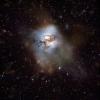
|
-
PIA16887:
-
Artist's Impression of Starburst Galaxy
Full Resolution:
TIFF
(4.917 MB)
JPEG
(211.9 kB)
|

|
2013-04-03 |
|
Chandra X-ray Observatory
Hubble Space Telescope
Spitzer Space Telescope
|
Chandra X-ray Telescope
IRAC
Visible-Light
|
3600x3600x3 |
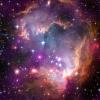
|
-
PIA16884:
-
Taken Under the 'Wing' of the Small Magellanic Cloud
Full Resolution:
TIFF
(38.89 MB)
JPEG
(1.685 MB)
|

|
2013-03-29 |
|
Herschel Space Observatory
|
PACS
SPIRE
|
1500x1434x3 |
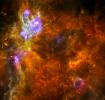
|
-
PIA16883:
-
Churning Out Stars
Full Resolution:
TIFF
(6.456 MB)
JPEG
(182.4 kB)
|

|
2013-02-05 |
Orion
|
Wide-field Infrared Survey Explorer (WISE)
|
WISE Telescope
|
5401x5400x3 |

|
-
PIA16684:
-
The Cosmic Hearth
Full Resolution:
TIFF
(87.54 MB)
JPEG
(1.346 MB)
|

|
2013-01-28 |
M31
|
Herschel Space Observatory
|
PACS
SPIRE
|
2711x2920x3 |

|
-
PIA16682:
-
Cool Andromeda
Full Resolution:
TIFF
(23.76 MB)
JPEG
(510 kB)
|

|
2013-01-10 |
|
ESO Very Large Telescope
Galaxy Evolution Explorer (GALEX)
Spitzer Space Telescope
|
|
5000x2812x3 |
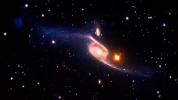
|
-
PIA16613:
-
Dwarf Galaxy Spotted
Full Resolution:
TIFF
(42.2 MB)
JPEG
(752.2 kB)
|

|
2012-11-15 |
|
Hubble Space Telescope
|
Advanced Camera for Surveys
WFC3
|
1578x1520x3 |
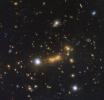
|
-
PIA16465:
-
Astronomers Spot Most Distant Known Galaxy
Full Resolution:
TIFF
(7.198 MB)
JPEG
(305.8 kB)
|

|
2012-11-07 |
|
Chandra X-ray Observatory
Isaac Newton Telescope
Spitzer Space Telescope
|
|
3600x3600x3 |
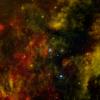
|
-
PIA16438:
-
A Nearby Stellar Cradle
Full Resolution:
TIFF
(20.2 MB)
JPEG
(1.678 MB)
|

|
2012-10-23 |
|
NuSTAR
|
NuSTAR
Spitzer Space Telescope
|
4000x2400x3 |
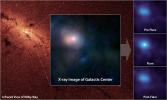
|
-
PIA16214:
-
Pointing X-ray Eyes at our Resident Supermassive Black Hole
Full Resolution:
TIFF
(28.81 MB)
JPEG
(2.077 MB)
|

|
2012-10-23 |
|
NuSTAR
|
NuSTAR
|
3202x2402x3 |
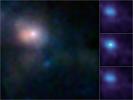
|
-
PIA16213:
-
First Look at Milky Way's Monster in High-Energy X-ray Light
Full Resolution:
TIFF
(23.08 MB)
JPEG
(206.4 kB)
|

|
2012-10-03 |
|
Spitzer Space Telescope
|
Spitzer Space Telescope
|
3000x2400x3 |
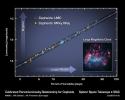
|
-
PIA15819:
-
Cepheids as Cosmology Tools
Full Resolution:
TIFF
(21.61 MB)
JPEG
(453.3 kB)
|

|
2012-10-03 |
|
Spitzer Space Telescope
|
|
4444x2500x3 |
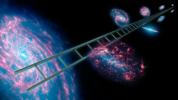
|
-
PIA15818:
-
Climbing the Cosmic Distance Ladder (Artist's Concept)
Full Resolution:
TIFF
(33.35 MB)
JPEG
(769.2 kB)
|

|
2012-08-29 |
|
Wide-field Infrared Survey Explorer (WISE)
|
WISE Telescope
|
6500x3500x3 |
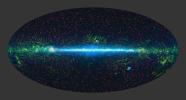
|
-
PIA15812:
-
Galaxies Burn Bright Like High-Wattage 'Light Bulbs'
Full Resolution:
TIFF
(68.28 MB)
JPEG
(3.974 MB)
|

|
2012-08-15 |
Messier 100
|
Spitzer Space Telescope
|
IRAC
MIPS
|
1016x1016x3 |
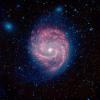
|
-
PIA15910:
-
The Swirling Arms of the M100 Galaxy
Full Resolution:
TIFF
(2.503 MB)
JPEG
(150.8 kB)
|

|
2012-08-15 |
Messier 100
|
Spitzer Space Telescope
|
IRAC
MIPS
|
1016x1016x3 |
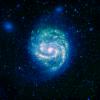
|
-
PIA15909:
-
Hot and Cold in the M100 Galaxy
Full Resolution:
TIFF
(2.12 MB)
JPEG
(148.6 kB)
|

|
2012-06-28 |
|
NuSTAR
|
NuSTAR
|
1366x1024x3 |
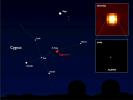
|
-
PIA15804:
-
NuSTAR's First View of High-Energy X-ray Universe
Full Resolution:
TIFF
(4.198 MB)
JPEG
(312.9 kB)
|

|
2012-06-19 |
|
Hubble Space Telescope
|
WFC3
|
761x761x3 |
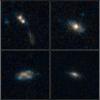
|
-
PIA15831:
-
The Homes of Quasars
Full Resolution:
TIFF
(1.738 MB)
JPEG
(64.82 kB)
|

|
2012-05-23 |
|
Spitzer Space Telescope
|
|
2299x2299x3 |
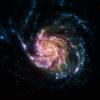
|
-
PIA15630:
-
Pinwheel Galaxy Rainbow
Full Resolution:
TIFF
(15.87 MB)
JPEG
(422.2 kB)
|

|
2012-05-17 |
|
Herschel Space Observatory
|
SPIRE
|
6898x3880x3 |
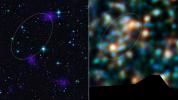
|
-
PIA15659:
-
A Star-Bursting Filament
Full Resolution:
TIFF
(80.29 MB)
JPEG
(2.074 MB)
|

|
2012-05-16 |
M31
|
Galaxy Evolution Explorer (GALEX)
|
Ultraviolet/Visible Camera
|
9400x7000x3 |
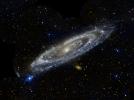
|
-
PIA15416:
-
Andromeda
Full Resolution:
TIFF
(197.4 MB)
JPEG
(6.751 MB)
|

|
2012-04-17 |
|
Chandra X-ray Observatory
Hubble Space Telescope
Spitzer Space Telescope
|
|
3600x2880x3 |
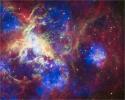
|
-
PIA14415:
-
A New View of the Tarantula Nebula
Full Resolution:
TIFF
(31.1 MB)
JPEG
(1.774 MB)
|

|
2012-03-14 |
|
Wide-field Infrared Survey Explorer (WISE)
|
WISE Telescope
|
10000x5000x3 |
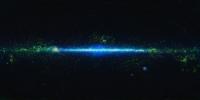
|
-
PIA15482:
-
Mapping the Infrared Universe: The Entire WISE Sky -- Rectangular Format
Full Resolution:
TIFF
(150 MB)
JPEG
(7.365 MB)
|

|
2012-03-14 |
|
Wide-field Infrared Survey Explorer (WISE)
|
WISE Telescope
|
10000x5030x3 |
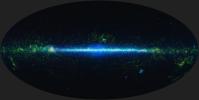
|
-
PIA15481:
-
Mapping the Infrared Universe: The Entire WISE Sky
Full Resolution:
TIFF
(150.9 MB)
JPEG
(6.828 MB)
|

|
2012-03-08 |
|
Spitzer Space Telescope
|
IRAC
|
3000x2400x3 |

|
-
PIA15413:
-
An Audience Favorite Nebula
Full Resolution:
TIFF
(21.6 MB)
JPEG
(964.2 kB)
|

|
2012-03-08 |
|
Spitzer Space Telescope
|
GLIMPSE
MIPSGAL
|
2799x1926x3 |
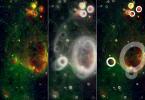
|
-
PIA15412:
-
Finding Bubbles in the Milky Way
Full Resolution:
TIFF
(16.17 MB)
JPEG
(546.9 kB)
|

|
2012-02-13 |
|
Planck
|
Fermi Gamma-ray Space Telescope
Planck LFI-HFI
|
1024x768x3 |
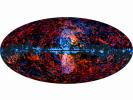
|
-
PIA15229:
-
Galactic Haze seen by Planck and Galactic 'Bubbles' seen by Fermi
Full Resolution:
TIFF
(2.363 MB)
JPEG
(113.3 kB)
|

|
2012-02-13 |
|
Planck
|
Planck LFI-HFI
|
1024x768x3 |
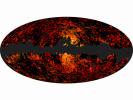
|
-
PIA15228:
-
The Mysterious Galactic Haze seen by Planck
Full Resolution:
TIFF
(2.363 MB)
JPEG
(95.5 kB)
|

|
2012-02-13 |
|
Planck
|
High Frequency Instrument
|
1113x835x3 |
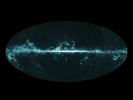
|
-
PIA15227:
-
All-sky Image of Molecular Gas and Three Molecular Cloud Complexes seen by Planck
Full Resolution:
TIFF
(2.792 MB)
JPEG
(78.38 kB)
|

|
2012-01-10 |
|
Wide-field Infrared Survey Explorer (WISE)
|
WISE Telescope
|
13530x4909x3 |
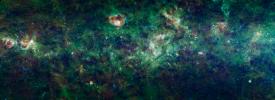
|
-
PIA15256:
-
A Royal Celebration
Full Resolution:
TIFF
(199.3 MB)
JPEG
(16.67 MB)
|

|
2012-01-10 |
|
Herschel Space Observatory
Spitzer Space Telescope
|
IRAC
SPIRE
PACS
|
10000x5000x3 |
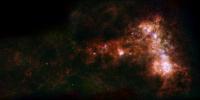
|
-
PIA15255:
-
A Dwarf Galaxy's Star Bar and Dusty Wing
Full Resolution:
TIFF
(150 MB)
JPEG
(6.56 MB)
|

|
2011-12-22 |
|
Wide-field Infrared Survey Explorer (WISE)
|
WISE Telescope
|
4260x4800x3 |

|
-
PIA15252:
-
A Cosmic Wreath
Full Resolution:
TIFF
(61.34 MB)
JPEG
(892.8 kB)
|

|
2011-12-12 |
|
Spitzer Space Telescope
|
|
7600x5500x3 |
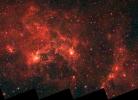
|
-
PIA14885:
-
Dragonfish Coming At You in Infrared
Full Resolution:
TIFF
(125.4 MB)
JPEG
(8.273 MB)
|

 Planetary Data System
Planetary Data System



















































































































